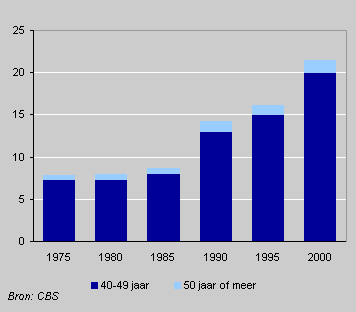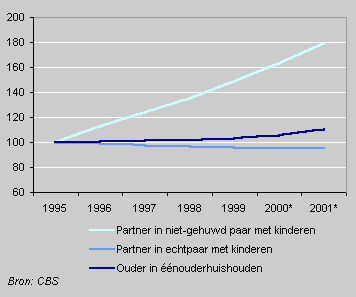First-time fathers increasingly older

Most babies born today have a father in his thirties. Compared with twenty-five years ago first-time fathers are increasingly older. Since 1975 the proportion of babies with a father in his forties has nearly tripled. In 1975 four percent of newborn babies had a father in his forties. In 1990 this had risen to eight percent, and in 2000 it was eleven percent. The relative increase in the number of babies with a father in his fifties is also noticeable, although the numbers are smaller.
Babies by father’s age

Teenage fathers very rare
Fathers in their twenties are increasingly less common. While 22 percent of babies born in 1995 had a father in his twenties, in 2000 this was only 18 percent. Although teenage fathers are very rare, in contrast to the general trend the annual number of babies born to fathers under twenty has risen from 130 to 240 in the last five years.
About one in seven babyboomers will not have children
The generation of men born in the period 1946-1950 had children at relatively early ages. About 16 percent of this generation remained childless, however. Younger generations postpone fatherhood for longer. The percentage of childless men in these generations will ultimately be substantially higher.
Persons in households (1995 = 100)

Fathers: married, cohabiting or alone
An increasing number of men are not married but live with a partner and one or more children. On the other hand, the number of married fathers is decreasing. There has also been a slight rise in the number of fathers who bring up their children without a partner. At the moment more than six thousand fathers are in such a position.
Jan Latten